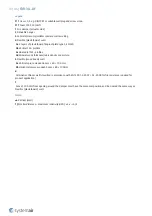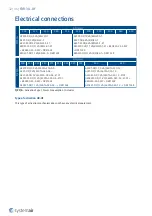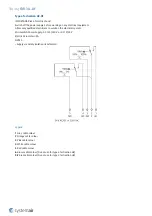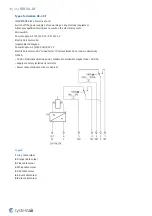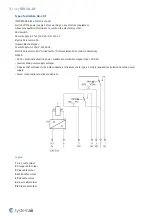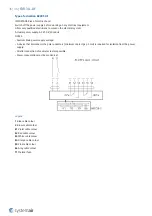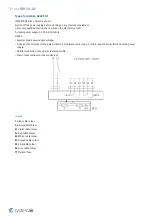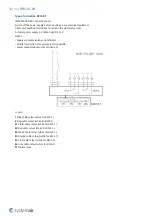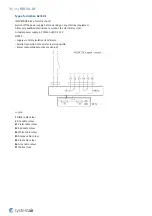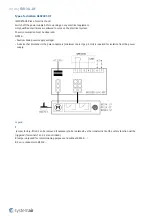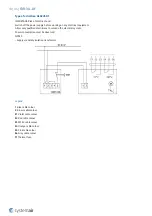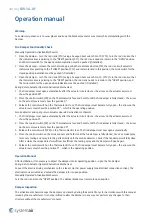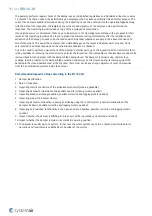
45/46 |
FDR-3G…OF
The operator performs regular checks of the dampers as per established regulations and standards at least once every
12 months. The check needs to be performed by an employee who has been specifically trained for this purpose. The
current fire damper condition determined during the inspection needs to be entered into the operating logbook along
with the date of the inspection, the legible name, surname and signature of the employee who performed the
inspection. The Operating Journal includes a copy of the employee’s authorization.
If any discrepancies are discovered, these need to be entered in the Operating Journal along with a proposal for their
removal. The Operating Journal can be found in product documents section. Immediately after the installation and
activation of the damper, it needs to be checked under the identical conditions as apply to the above mentioned 12-
month inspections. The visual check ensures that visible damages on the inspected damper parts are seen. On its
external side, the damper housing and the activation mechanism are checked.
Due to the need to perform a visual check of the damper’s internal parts, open the inspection lid. For small sizes there
is the possibility of removing the mechanism to perform the inspection. The removable mechanism always needs to be
returned back into the damper with the damper blade being closed. The damper’s internal casing, thermal fuse,
sealings, foaming substance, the damper blade condition and accuracy of its closure during its leaning against the
backstop in the closed position must all be checked. There must not be any strange objects or a layer of impurities
from the air distribution systems inside the damper.
Recommended Inspection Steps According to the EN 15 650:
1. Damper identification
2. Date of inspection
3. Inspecting electric connection of the activation mechanism (where applicable)
4. Inspecting damper for cleanliness and possible need for cleaning (where needed)
5. Inspecting blade and sealing condition, possible correction and logging (where needed)
6. Inspecting proper fire damper closure
7. Inspecting damper functionality – opening and closing using the control system, physical examination of the
damper’s behavior, possible correction and logging (where needed)
8. Inspecting end switches’ functionality in the open and closed position, possible correction and logging (where
needed)
9. Inspect whether the damper is fulfilling its role as part of the regulation system (where needed)
10. Inspect whether the damper remains in its standard operating position.
11. The damper is usually part of a system. In that case the whole system needs to be checked as described in its
operation and requirements published by the builder of the system.
Содержание A-FDR-3G-OF
Страница 1: ...FDR 3G OF Overflow Fire Damper FDR 3G...
Страница 13: ...13 46 FDR 3G OF 250 DN 630 Standardardly in position B On demand in position L T...
Страница 17: ...17 46 FDR 3G OF...
Страница 18: ...18 46 FDR 3G OF...
Страница 21: ...21 46 FDR 3G OF...
Страница 22: ...22 46 FDR 3G OF...
Страница 25: ...25 46 FDR 3G OF...
Страница 26: ...26 46 FDR 3G OF...
Страница 29: ...29 46 FDR 3G OF...
Страница 30: ...30 46 FDR 3G OF...
Страница 46: ...Systemair DESIGN 2021 04 27 Handbook_FDR_3G_OF_en GB...

